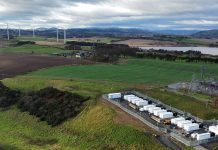 Scottish and Southern Energy Networks aims to bring households and communities into demand-side response and hopes to start procuring services this summer.
Scottish and Southern Energy Networks aims to bring households and communities into demand-side response and hopes to start procuring services this summer.
The move follows a five-year trial across 4,000 homes in the Solent region called SAVE, which tried a range of mechanisms to see how households could provide demand reduction and response, and what changes to the current market set up might help bring households into a smarter grid.
Project manager, Charlie Edwards, said the trial had helped enable “both the knowledge and analytical confidence … to bring domestic demand side management into the flexibility markets”. It has “laid a blueprint for partnerships and relationships that may help stack business cases to deliver this”, he added.
As a result, the company is defining what it calls ‘Social Constraint Managed Zones’ (SCMZ). These are areas where it will use flexibility over traditional reinforcement in order to keep the power network running smoothly.
SSEN said it “intends that suppliers, of all shapes and sizes, delivering anything from battery storage to energy efficiency in customers’ homes will be given the opportunity to offer flexible services to the network within identified regions in return for commercial rewards”.
The Energyst asked SSEN if it meant aggregators will not be necessary to participate. The company said that was being assessed, but the “intention is no need for an aggregator”. For example, a local council-owned leisure centre should be able to participate without going through an aggregator, said the DNO.
Distribution network companies procuring constraint management services from businesses usually require at least 100kW per provider, but SSEN said it is still assessing whether to implement a minimum threshold.
The company said commercial and delivery terms are also being scoped, but that it will “ensure it strikes a balance between making this attractive to customers without penalties and ensuring security of supply”.
SSEN said the SAVE project, undertaken with the University of Southampton, DNV GL and Neighbourhood Economics was its largest innovation trial it to date.
The final trial is now complete, and SSEN will publicise its research and findings in June.
Related stories:
How to balance the grid using energy efficiency as a tradeable resource
National Grid focuses on bringing smaller firms, EVs and households into flexibility
Domestic DSR: Social Energy lands first megawatt FFR contract, plans 350MW by 2020
Click here to see if you qualify for a free subscription to the print edition or to renew.
Follow us at @EnergystMedia. For regular bulletins, sign up for the free newsletter.



